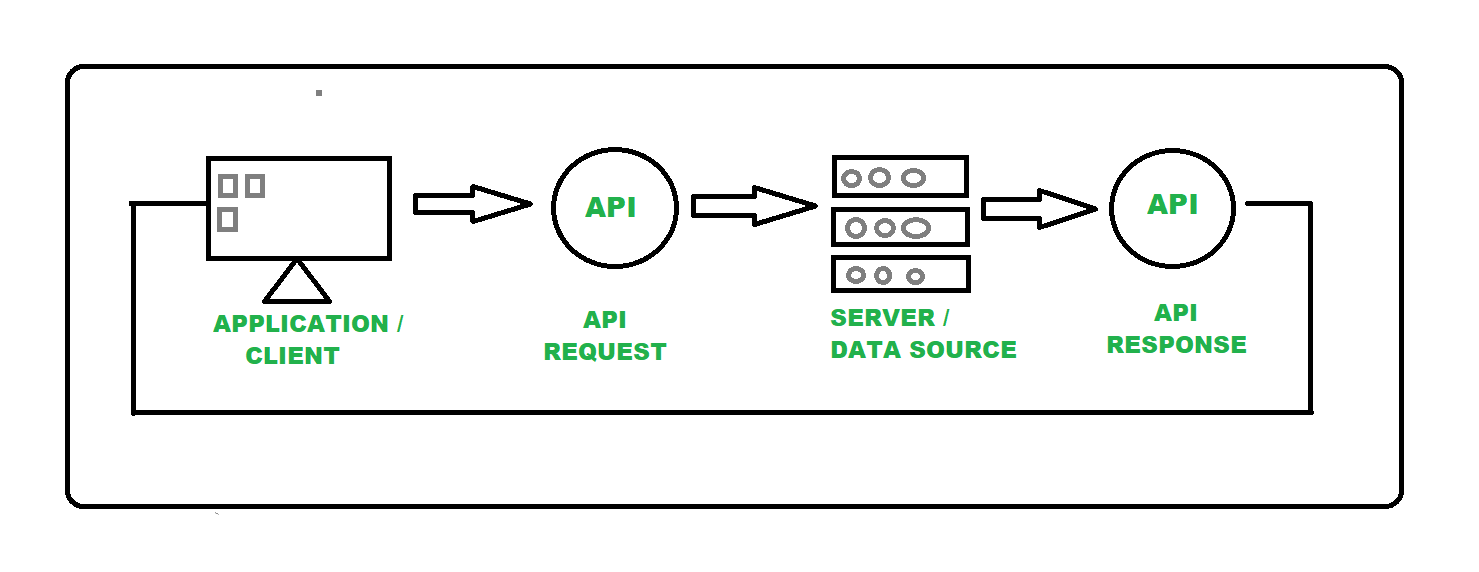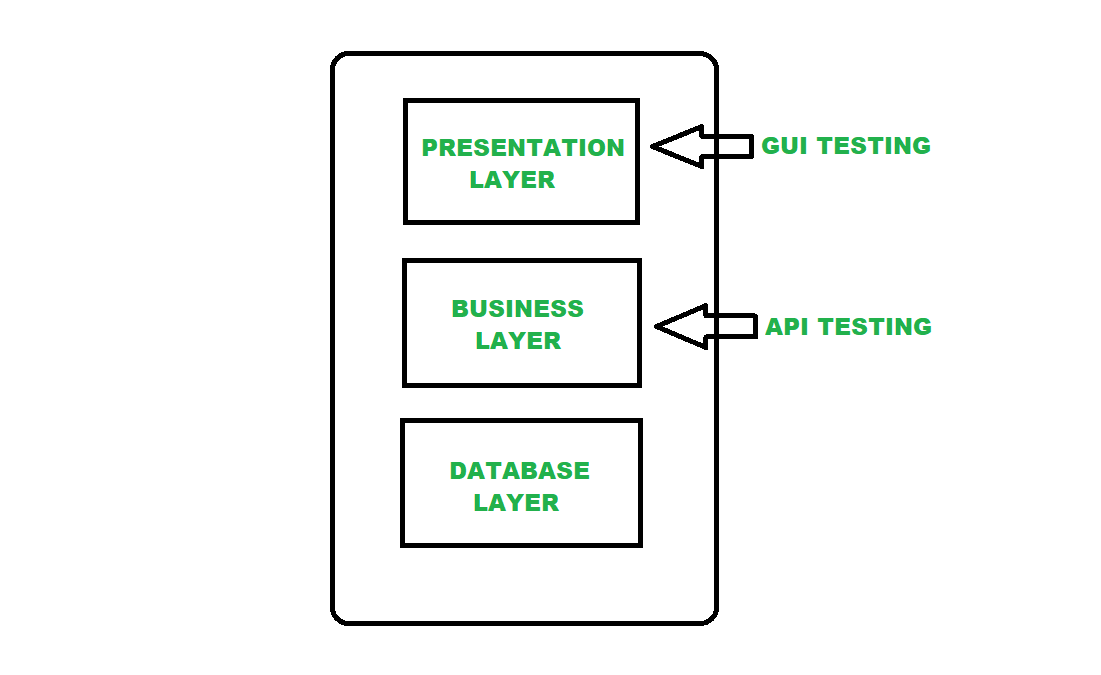API Testing – Software testing
Last Updated :
28 Nov, 2023
API testing, or application programming interface testing, is a type of software testing that focuses on the testing of individual API methods and the interactions between different APIs. This type of testing is typically performed at the integration level, after unit testing is completed, and before user interface testing begins. It is used to validate that the API behaves correctly and that it meets the requirements of the system.
API testing can be performed manually or using automated testing tools. Some common tasks that are performed during API testing include:
- Testing the functionality of the API to ensure it behaves as expected
- Verifying that the API returns the correct response for different input values Checking for error handling and validation of input
Testing for security vulnerabilities
- Checking for performance and scalability of the API
- API testing is important because it ensures that the different components of a system can communicate with each other correctly and that the system can handle a large volume of requests.
It is also used to ensure that the API is compatible with different platforms and operating systems, and can be integrated with other systems and applications.
API Testing : As we know API stands for Application Programming Interface which acts as an intermediate of communication between two applications. Due to this intermediary role of API (Application Programming Interface) two applications talk to each other and performs the required actions efficiently. API contains a set of rules and guidelines based on which the applications are developed. So in simple we can say an API acts as an interface between two software applications so that two software applications can communicate with each other. The below figure represents an API in an application :
API (Application Programming Interface) testing is a type of software testing that focuses on the functionality, reliability, and performance of application programming interfaces (APIs). APIs act as a bridge between different software systems, allowing them to communicate and exchange data with each other.
API testing is important because it helps ensure that the different systems that make up an application are working together correctly and that the data being exchanged is accurate and secure. It is also important because it helps identify and fix issues before the application is deployed to production.
API testing typically includes the following steps:
- Reviewing the API documentation to understand the functionality and expected inputs and outputs
- Writing test cases that exercise the different functionality of the API
- Executing the test cases and comparing the expected results with the actual results
- Analysing the results and identifying any issues that need to be fixed
There are several types of API testing, including:
- Functional testing: Testing the functionality of the API to ensure it behaves as expected
- Security testing: Testing the security of the API to ensure it is protected against common vulnerabilities
- Performance testing: Testing the performance of the API to ensure it can handle the expected load
- Interoperability testing: Testing the compatibility of the API with other systems
- Usability testing: Testing the usability of the API for developers
- Tools such as Postman, SoapUI, and Runscope can be used to automate and simplify the process of API testing.

Types of API testing
API Testing refers to test the APIs which are used in the application just to validate that the APIs are working fine. When a system has a collection of APIs, these needs to be tested to know that the system is working perfectly or not. Mostly we can say that API testing confirms system’s performance, reliability, security and functionality. Below list represents some of the tools which are used for API Testing :
- Postman
- Katalon Studio
- Soap UI
- Parasoft
- REST assured
- Tricentis Tosca
- Ping API
- Assertible
GUI testing is different from the API testing as GUI testing is present at Presentation layer where the API testing is present at Business layer. If we take an example of a typical app then API is the middle layer in between UI layer and Data base layer and due to this API communication and data exchange between the applications occur. The below figure represents the layer at which API testing is performed :

Layers of API Testing
API testing Types : There are multiple types of testing which are most often used as form of API testing which means during multiple types of testing simultaneously API can be tested. So below list represents the types of API testing i.e.
- Unit Testing
- Integration Testing
- End-to-End Testing
- Performance Testing
- Functional testing
- Security Testing
- Load testing
- Penetration testing
- Reliability testing
- Fuzz testing
What exactly we check during API testing :
- Data accuracy.
- Response time.
- Duplicate or missing functionality.
- Authorization checks.
- Multithreaded issues.
- Security and performance issues.
- Error codes if API returns.
- Reliability issues.
Benefits of API Testing :
Like we get a lot of advantages by using APIs in application, similarly by performing API testing we achieve a lot of things towards the success of the developed application. Below are some benefits i.e.
- Earlier validation of correctness in response and data.
- Earlier test maintenance.
- Better speed and coverage of testing.
- GUI independent testing.
- Reduced testing cost.
- Language independent test.
- Helpful in testing core functionality.
- API testing has several benefits that make it an important aspect of software testing:
- Improved functionality: API testing helps ensure that the functionality of the API is working as expected and that the data being exchanged is accurate and complete.
- Increased security: API testing helps identify and fix security vulnerabilities such as SQL injection and cross-site scripting. This helps ensure that the API is protected against common threats and that sensitive data is secure.
- Improved performance: API testing helps identify and fix performance bottlenecks, such as slow response times or high error rates. This helps ensure that the API can handle the expected load and that users have a positive experience when using it.
- Better integration: API testing helps ensure that the different systems that make up an application are working together correctly and that the data being exchanged is accurate and secure.
- Reduced risk: By identifying and fixing issues before the application is deployed to production, API testing helps reduce the risk of system failure or poor performance in production.
- Cost-effective: API testing is more cost-effective than fixing problems that occur in production. It is much cheaper to identify and fix issues during the testing phase than after deployment.
- Improved developer experience: By making sure that the API is easy to use, well-documented, and provides useful error messages, API testing helps improve the developer experience and encourage adoption.
- Greater flexibility: API testing allows teams to test the application without a user interface, which can be useful when testing microservices or when the user interface is not yet developed.
Disadvantages of API Testing:
API testing can have some disadvantages, including:
- Complexity: API testing can be complex, especially when testing multiple APIs or when testing APIs that are integrated with other systems.
- Limited Visibility: Since API testing is performed at the integration level, it can be difficult to see how the API is interacting with other components of the system. This can make it difficult to identify and troubleshoot issues.
- Security: APIs can introduce security vulnerabilities if they are not properly tested and secured. This can be a significant concern for organizations that handle sensitive data.
- Difficulty in testing non-functional requirements: Non-functional requirements such as performance, scalability and security are difficult to test with functional testing
- Time consuming: The time required to develop and execute test scripts for APIs can be longer than other types of testing.
- Limited documentation: Limited or poor documentation of the API can make it difficult for testers to understand how the API should behave.
- Limited test coverage: It is difficult to test all possible scenarios and edge cases with API testing.
- Cost: Automated API testing tools can be expensive and require a significant investment.
Types of Bugs that may occur in API Testing:
- Performance Issues – API response Time can be very high, and they may have latency.
- Response data may not structure correctly ( JSON or XML )
- Security Issues
- Incorrect handling of valid argument values
- Improper errors/warning to caller
- Missing or Duplicate Functionality
- Reliability Issues : Difficulty in connecting and getting a response from API
Like Article
Suggest improvement
Share your thoughts in the comments
Please Login to comment...